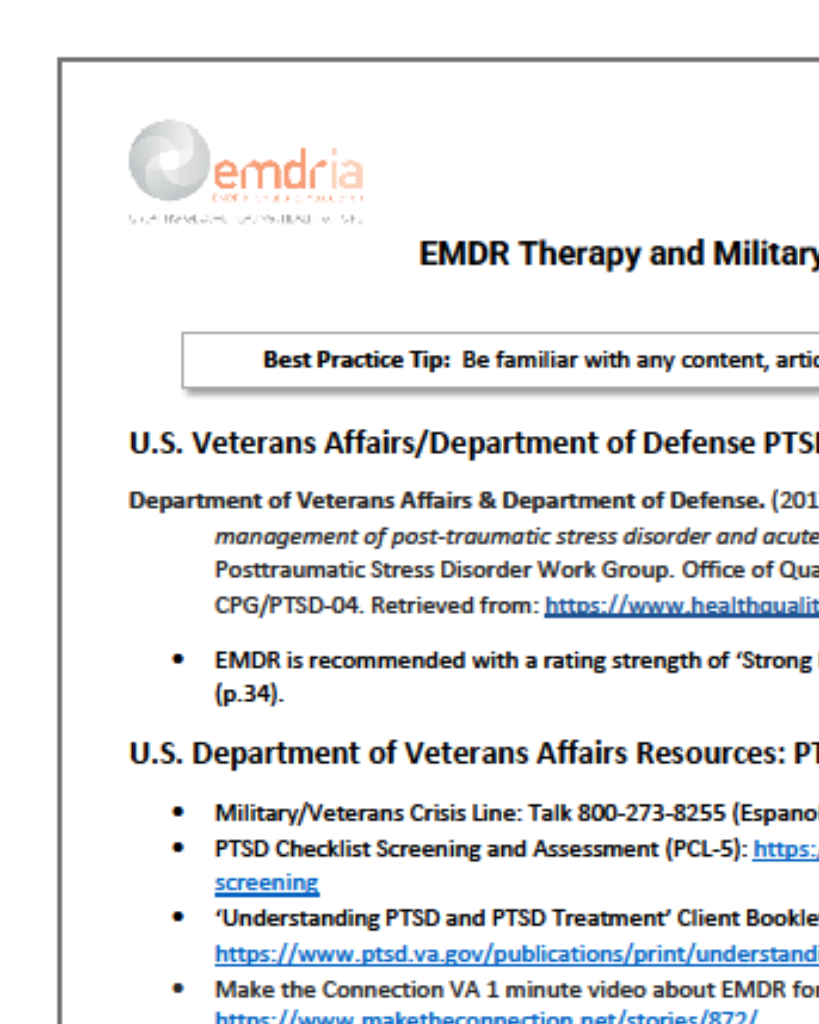Comparison of the effectiveness of eye movement desensitization and reprocessing (EMDR), transcranial direct current brain stimulation (tDCS) and combined therapy on perceived stress and food craving in women with binge eating
A study comparing EMDR therapy, transcranial direct current brain stimulation, and combined therapy as a treatment for food cravings and perceived stress in women who binge eat.
Article Abstract
“The purpose of this study was to compare the effectiveness of eye movement desensitization and reprocessing, transcranial direct current brain stimulation therapy, and combined therapy on perceived stress and food craving in women with binge eating. This semi-experimental study was conducted with a pretest-posttest design with control group and follow-up 2 month. The statistical population was all women with binge eating who referred to nutrition centers in the spring of 2023 in city of Karaj. In the first stage, using Judgmental sampling method, 60 women were selected and then randomly divided into 3 experimental groups (each group 15 women) and one control group (15 women) were replaced and experimental groups underwent eye movement desensitization and reprocessing, transcranial direct current brain stimulation therapy and combined therapy, but the control group received no training and remained in the waiting list. To collect data binge eating scale (BES) of Gormally and et al (1982), perceived stress scale (PSC) of Cohen et al (1983) and trait food-cravings questionnaires (FCQ-T) of Cepeda-Benito and et al (2000). Data analysis was performed using SPSS-28 software in two sections: descriptive and inferential (analysis of variance with repeated measures and Bonferroni). The results showed that three interventions in post-test and follow up had a significant effect on perceived stress and food craving (P<0.05). In addition, the results of Bonferroni post hoc test showed that combined therapy is more effective in perceived stress and food craving (P<0.05). Based on the results of the present study, it can be said that eye movement desensitization and reprocessing and transcranial direct current brain stimulation therapy can be used as a treatment method on perceived stress and food craving in counseling centers and priority of use in the treatment of in women with binge eating is with combined therapy.”
—Description from publisher
Article Access
Purchase/Subscription Required
Soroushnia, S., Alipour, A., Jafari, E., & Zare, H. (2024). Comparison of the effectiveness of eye movement desensitization and reprocessing (EMDR), transcranial direct current brain stimulation (tDCS) and combined therapy on perceived stress and food craving in women with binge eating. Journal of Modern Psychological Research, 19(75). DOI: 10.22034/jmpr.2024.62419.6289 Retrieved from: https://psychologyj.tabrizu.ac.ir/article_18589_en.html?lang=en
Date
October 1, 2024
Creator(s)
Soheila Soroushnia, Ahmad Alipour, Eisa Jafari
Contributor(s)
Hosein Zare
Topics
Eating Disorders/Body Image
Practice & Methods
Integrative Therapies
APA Citation
Soroushnia, S., Alipour, A., Jafari, E., & Zare, H. (2024). Comparison of the effectiveness of eye movement desensitization and reprocessing (EMDR), transcranial direct current brain stimulation (tDCS) and combined therapy on perceived stress and food craving in women with binge eating. Journal of Modern Psychological Research, 19(75). DOI: 10.22034/jmpr.2024.62419.6289 Retrieved from: https://psychologyj.tabrizu.ac.ir/article_18589_en.html?lang=en
Audience
EMDR Therapists, Other Mental Health Professionals
Language
English
Content Type
Article, Peer-Reviewed
Access Type
External Resource





